Evolution of Reproductive rates
1/22
Earn XP
Description and Tags
Lecture 1
Name | Mastery | Learn | Test | Matching | Spaced |
|---|
No study sessions yet.
23 Terms
Behaviour
descidion makinng
whre to live, what to eat, who to mate with , many offsrping, how much time to spend on caring for offsrping
Natueral selsection should favour these things
BUT
depends on ecological stage on which individuals play their behaviout
physical environemnt
biotic environment
Proximate vs Ultimate questions
Lion prides: tkae over males kill the cubs
Proximate cause
hormones
Ultimate cause
So females get back into oestrus sooner
Group selection theory
Indivudals restrain their reproduction for the good of the group
Why group over individual selection?
Selfish individuals with die out
over exploit their resources
Testing altruism: Optimal clutch size (Great tits)
Experiement
swapped eggs among nests to create different brood sixes
Results:
larger brooder= survival per young declined
each chick got less food
reaches an OPTIMUM: balance between benefit of more kids to the chances they will not survive
Conclusion:
results matched the prediction
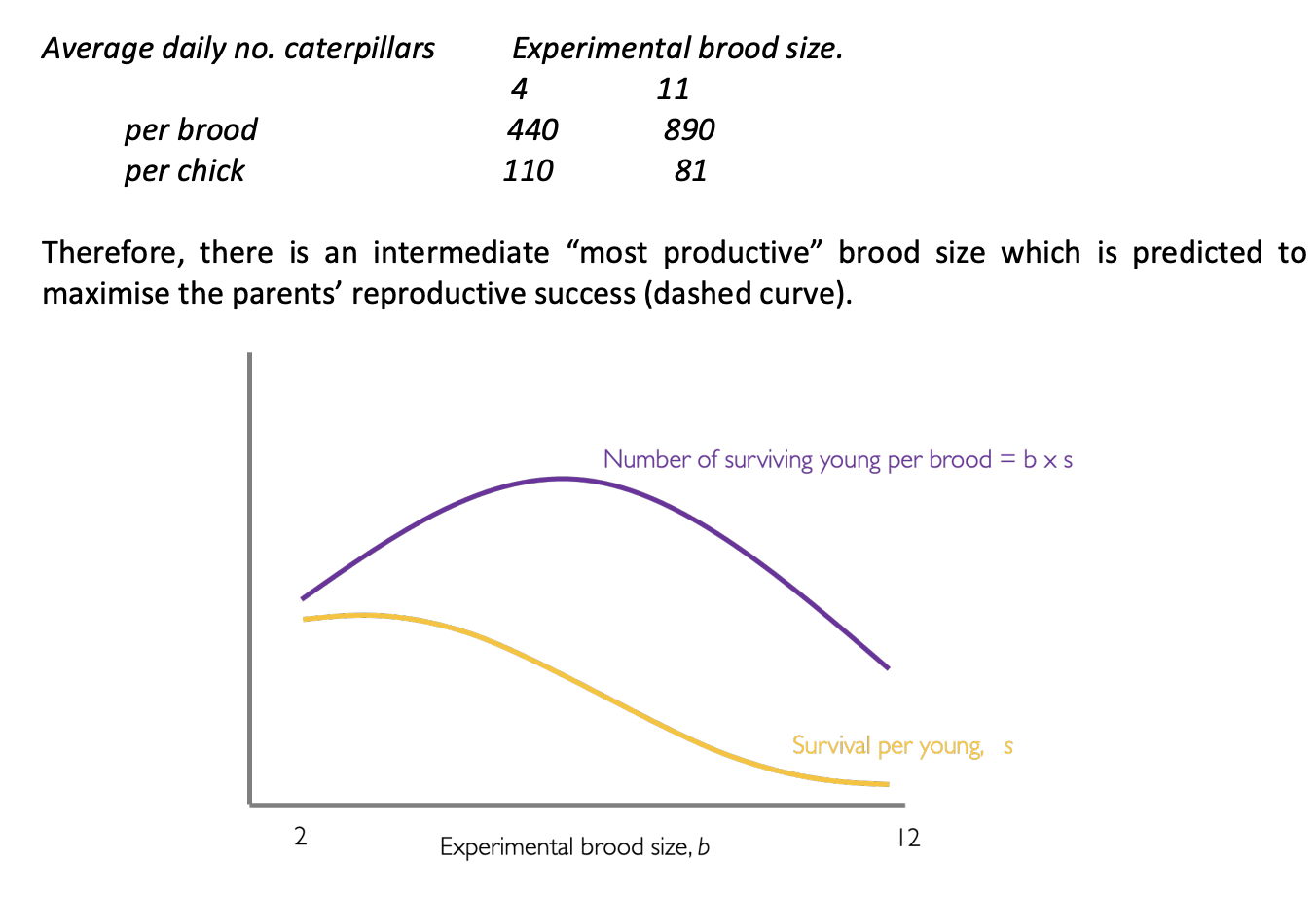
Problem witht he experiement
Optimum clutch size calculated observed to be smaller in the real world
2 Hypotheses to why clutch size smaller than optimum
Ignored costs of egg production
Ignored trade off of increased parental care and parental mortality
Testing hypothesis 1
Costs of forming and incubating extra eggs= reduces success?
Experiment: increased brood size by 2 in three different ways
adding 2 chicks
adding 2 eggs (so incubate two more)
Forcing parents to have 2 more (take them away then replace etc)
Results of testing hypothesis 1
Costs of forming and incubating an extra 2 eggs did not reduce success
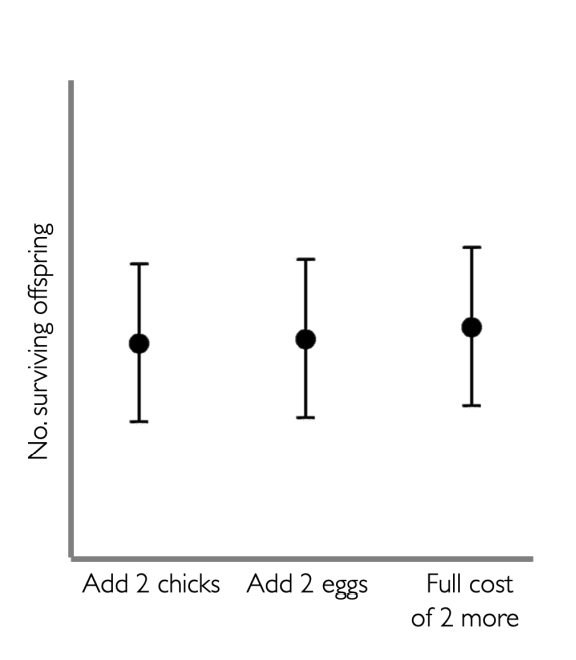
Testing Hypothesis 2
Optimal clutch size to maximise lifetime reproduction is less b*
Compare the adult mortality to optimum brood size
Find where the gap between mortality and brood size is the greatest
minimum adult death to max brood
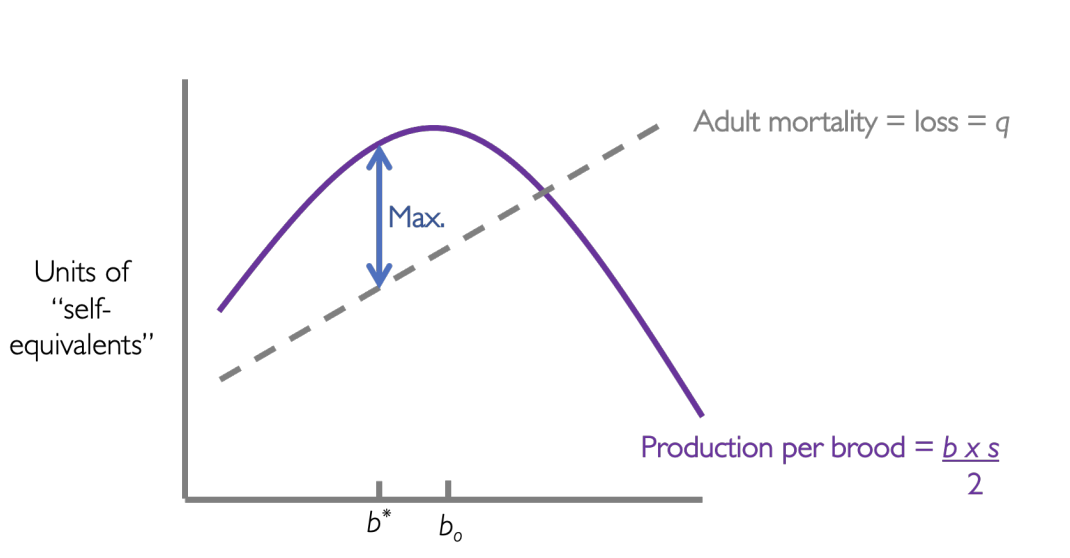
Hypothesis 2 results
Results:
extra mortality is why females lay fewer eggs than predicted
Maximises lifetime reproductive success
Female fitness= (female survival to next breeding season) + (0.5 x no.offspring surviving to next season)
only 0.5 relatedness to offspring
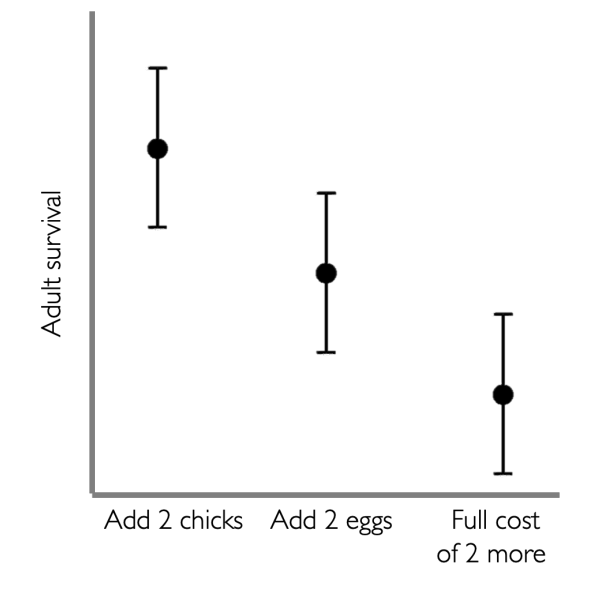
Overall conclusions of optimum clutch size
Females made to pay full costs did less well than controls with their natural clutch size
Only extra chicks given for free did better
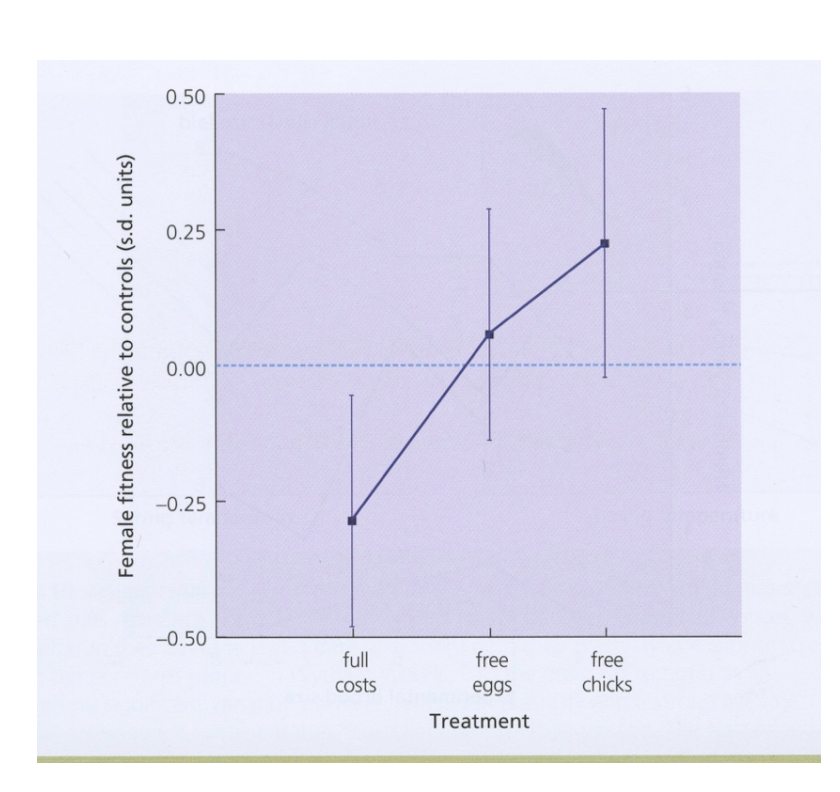
Trade-offs involved in maximising Lifetime Reproductive Success
numbers v quality of offspring
reproductive effort v parental survival
Variation between species in these two trade-offs
May explain why different species have different life histories
Example of differing trade-offs in different species: Song birds in temperate vs tropics
Temperate:
larger clutches
seasonal flush of food (not all year round)
Future chances of reproduction are lower
Pays to put more effort into breeding
Fast life history
Tropics
resources all year round
Slow life history
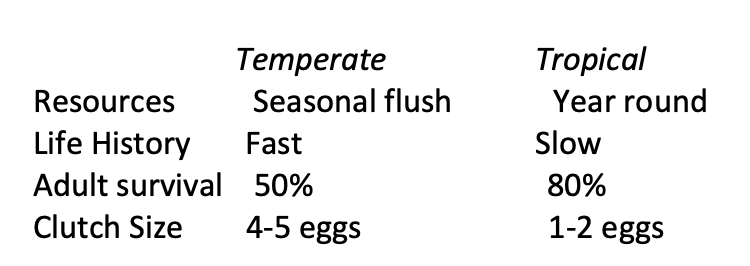
Factors that can cause differences in life histories of different species
Food availability/ climate (when food come in)
extra-pair paternity?
Predation
Cooperation?
When chances of future reproduction are very slim
Semelparous
put all resources into one big bang reproductive effort
Pacific salmon
Extra pair mating
The parents of the offspring are not always the same
no. offspring not always a good measure of reproductive success
e.g Red-winged blackbirds in N.America
20% of male’s reproducive success is from extra-pair mating
What this means??
Measuring indiidual reproductive success is harder to look at
Influence of predation of life history evolution: guppies
High predation = fast life history
quicker, larger broods at earlier age
Low predation= slow life history
older age, less offspring

Guppies continued: when high pred put in low pred
took 11 generations to shift life history
breed later and smaller broods
Reproductive effort per brood varies with future chances of reproduction
Cooperation among male lions to take-over a pride
Reproductive success per coalition increases
and
so does average success per male

However: DNA profiles show…
Strong reproductive skew
Subordinate males have little or no success
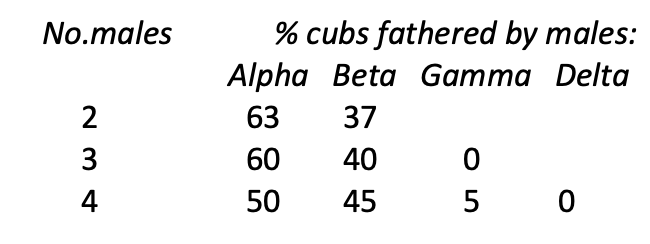
Why do subordinate males cooperate then?
To do with relation:
Related males
Join larger groups with brothers
Gain no paternity… BUT
gain indirect fitness
Unrelated males
only join small teams
make sure they will have some paternity